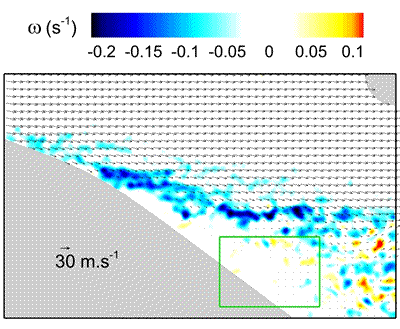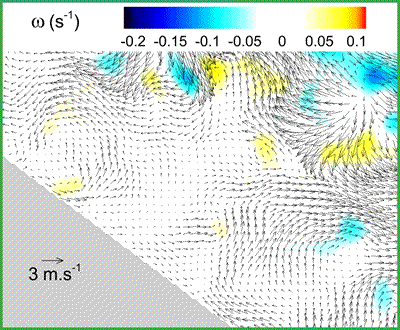PIV* is a method used to chart speeds in flows. The association of aerodynamicists and data processing specialists has made it possible to boost the performance of the method.
Two ONERA engineer-researcher teams - one of experimental aerodynamicists, the other data processing experts specializing in image processing, have together developed the FOLKI*-SPIV software for high-speed processing of sequences of PIV images (Particle Image Velocimetry).
We know about the precision and remarkable performance of FOLKI-SPIV: in the research wind tunnels in Meudon [DAFE] where it has now become the reference software, FOLKI-SPIV has enabled us to divide processing times by a factor of 8. So, to process 1000 stereo 4 Mpixel PIV images: 15 minutes with FOLKI-SPIV with an GPU NVIDIA Tesla C2050 board and 2 hours with a traditional method on an 8-core Intel Xeon E5345 at 2.33 GHz with 2.87 Gb RAM.
FOLKI-SPIV is also used in the large F2 wind tunnel (pressurized, low-speed) of the Fauga-Mauzac center.

Example of a FOLKI-SPIV result with the S19 laboratory wind tunnel in Meudon. The flow takes off at the top of a bent slope: the PIV shows the speed field at all points of the observation window. (below: close-up of the rectangle above)

* PIV (Particle Image Velocimetry) is an experimental technique that allows the speed fields of fluids to be measured by sowing the fluid with small particles that are imaged at a very high rate with high-speed cameras coupled to a laser flash.
** The FOLKI algorithm family uses graphic processing units (GPU) that make it possible to reach - for some types of applications - computing powers that are much greater than those of the processors that are usually used.




